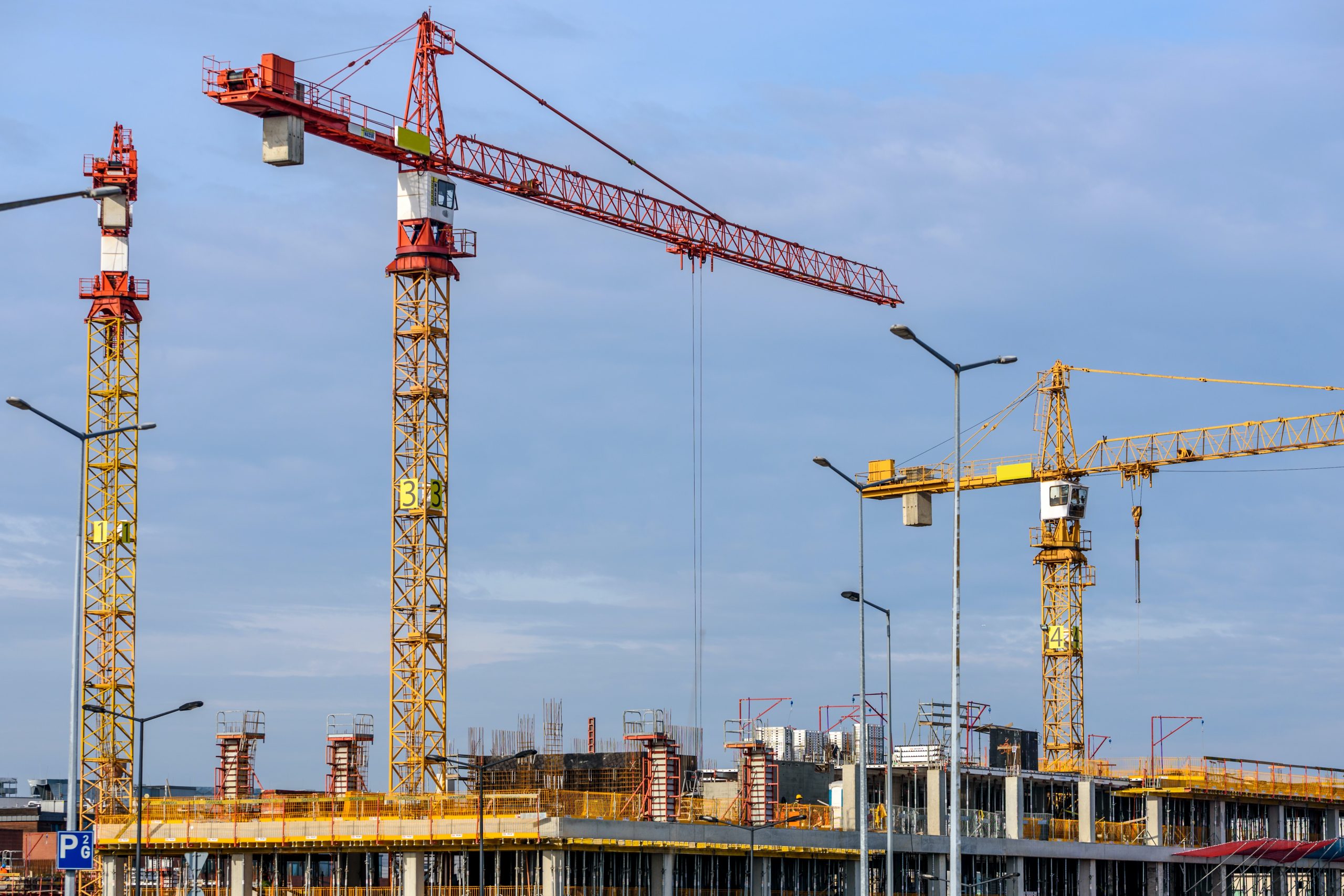
Heavy cranes are essential tools on many construction and industrial sites, capable of lifting and moving massive loads that would be impossible to handle otherwise. But their power also comes with significant risk that can lead to accidents that cause costly delays, property damage, and serious injuries. Here are the most important safety tips to keep in mind for heavy crane lifting operations.
Start with a Detailed Risk Assessment
Every safe crane lift begins with understanding the hazards. Before the first piece of equipment is set in motion, evaluate the site for potential risks. Environmental conditions such as strong winds, uneven terrain, or nearby obstacles like power lines and buildings can quickly complicate a lift.
Identify these hazards in advance and take steps to minimize them. For example, schedule lifts for times when weather conditions are calm, or reposition equipment to avoid power line interference. Taking this step early prevents situations that could escalate into serious accidents.
Ensure the Crane Matches the Load
Cranes are designed with strict lifting capacities. Exceeding those limits can destabilize the equipment, damage components, or cause catastrophic failure. Before you start, calculate the total weight of the load, including rigging hardware, slings, and attachments, and verify that your crane can safely handle it.
When in doubt, choose a crane with a higher capacity than required. It’s better to have more lifting power than to risk pushing equipment beyond its limits. This precaution extends the life of your crane and keeps operations safer for everyone involved.
Invest in Proper Training for All Personnel
A heavy crane lift is rarely a one-person job. Operators, riggers, and signal personnel must work in sync, each understanding their responsibilities. Lack of training or unclear roles often leads to missteps that could have been avoided.
Make sure all team members have the required certifications and are trained to follow industry-standard practices. When everyone on-site understands the plan, the lift can proceed more efficiently and safely.
Maintain a Safe Perimeter
The area around a crane lift should be clearly marked and off-limits to unauthorized personnel. Use barriers, cones, or caution tape to define the work zone and keep bystanders at a safe distance.
A controlled perimeter prevents people from wandering into hazardous areas where they could be struck by moving equipment, falling materials, or swinging loads. Assign spotters to help monitor the zone, ensuring that no one enters unexpectedly during critical stages of the lift.
Inspect Equipment Before Every Lift
Cranes endure heavy use, and even minor wear can become a safety concern. Before any lifting begins, inspect the crane thoroughly. Pay attention to cables, hooks, slings, hydraulic systems, and other load-bearing parts.
Replace any worn or damaged components immediately. Routine inspections not only catch problems early but also extend the life of the equipment. Making this a non-negotiable part of your process greatly reduces the risk of mechanical failure mid-lift.
Plan and Execute Rigging Correctly
Rigging is one of the most critical parts of crane operation. Poorly secured loads can shift or slip, creating dangerous situations. Always check that slings, shackles, and other rigging materials are in good condition and rated for the load’s weight.
Balance the load evenly and, if possible, test it with a small lift before committing to the full height. Proper rigging ensures stability throughout the operation and minimizes the risk of accidents.
Keep Communication Clear and Consistent
Lifting heavy loads requires precise coordination between the crane operator and ground crew. Establish clear communication protocols before starting, including agreed-upon hand signals and verified radio connections.
A breakdown in communication can result in incorrect movements or unsafe positioning of the load. Make sure everyone is using the same method and that backup options are available in case of equipment failure.
Consider Environmental Factors Before Lifting
Weather plays a major role in crane safety. Strong winds, rain, snow, or ice can destabilize a load or reduce traction for equipment. Even moderate gusts can make large or flat-surfaced loads behave unpredictably.
Check forecasts ahead of time and be ready to delay work if conditions become unsafe. Sometimes waiting for better weather is the safest and most cost-effective decision you can make.
Avoid Overloading at All Costs
Overloading is one of the most dangerous mistakes in crane operation. Not only does it risk immediate equipment failure, but it also puts excessive strain on components, shortening the crane’s lifespan.
Always follow the manufacturer’s capacity guidelines and factor in every part of the load. Choosing safety over speed or convenience protects both your team and your investment in equipment.
Stay Alert Throughout the Lift
A heavy crane lift doesn’t end once the load leaves the ground. It requires constant attention from start to finish. Operators should monitor for signs of instability, shifting loads, or unusual sounds from the equipment.
Signalers and spotters should remain in position until the load is safely secured. Continuous monitoring allows the team to respond quickly if conditions change or an issue arises.
Make Safety a Team Commitment
Heavy crane lifting is a collaborative process that demands attention to detail and commitment to safety at every level. From site supervisors to new crew members, everyone plays a role in ensuring that each lift goes smoothly.
By investing in training, maintaining equipment, and sticking to proven safety protocols, you not only protect your workers but also improve efficiency and project outcomes.
Contact Bobcat Contracting LLC for Heavy Crane Lifting in Texas!
When you need safe, professional, and reliable heavy crane lifting services in Texas, Bobcat Contracting LLC is here to help. Our experienced operators, well-maintained equipment, and strict safety standards ensure that every lift is handled with precision and care.
Whether your project involves construction, industrial installation, or specialized lifting, we have the tools and expertise to get the job done right. Contact us today to discuss your project needs and schedule your next heavy crane lift with a team you can trust.
